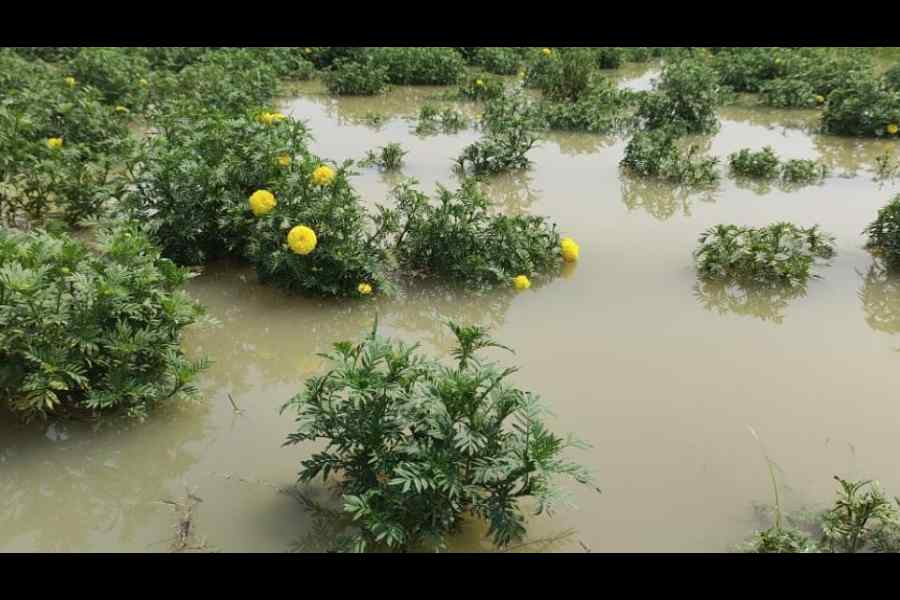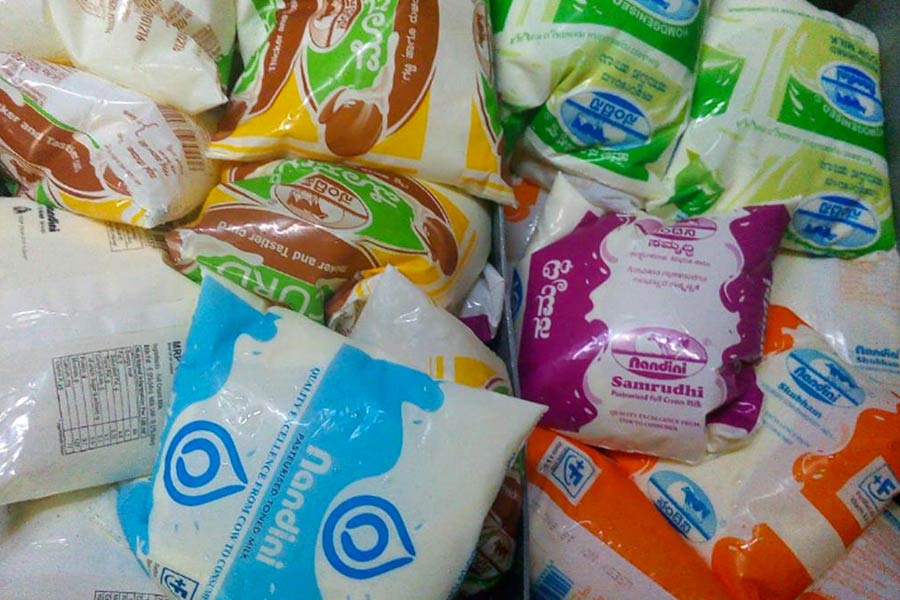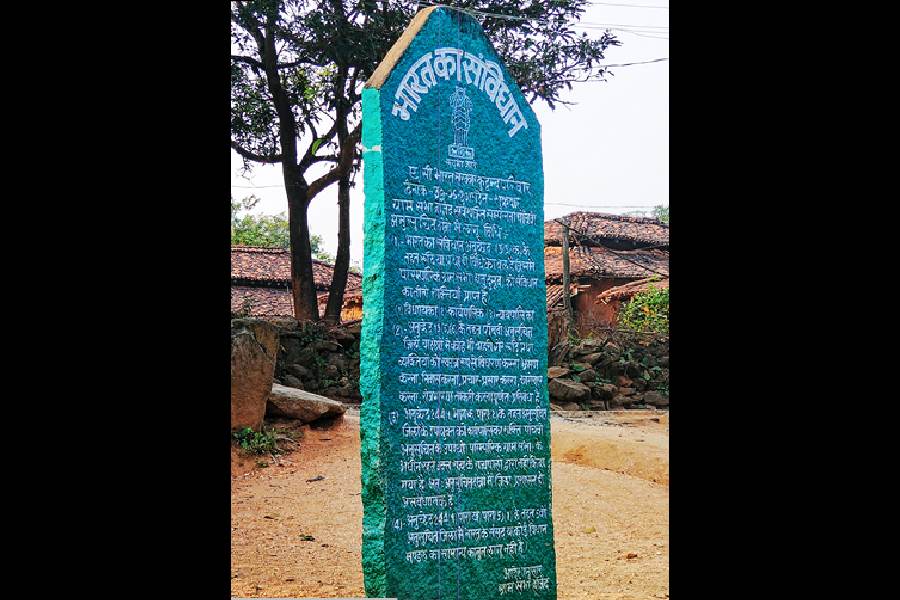The floods in south Bengal are threatening to leave Durga Puja pandals a little thin on colour and fragrance.
Flower supply for the Puja altars — typically a riot of marigold, jasmine and tuberose — might take a hit with thousands of acres of floriculture fields submerged in floodwater, growers and government officials say.
Among the districts worst hit are East and West Midnapore, Hooghly, and parts of East Burdwan, which are major sources of flowers for Calcutta and other places within and outside Bengal, especially during the festive season.
Flower growers said they typically start stocking their produce in cold storages three weeks before Durga Puja — which begins on October 9 this year — to meet the high demand.
“Forget about storing flowers, we are now worried whether the plants would survive at all. Floodwaters have submerged at least five bighas of fields where we (he and his family) were growing flowers specifically for Durga Puja,” said Rakesh Barui, a flower farmer from the key flower-supplying region of Kalna in East Burdwan.
Barui faces a likely loss of ₹3 lakh, which is half his family’s annual income.
“Apart from Calcutta, we also supply flowers to Jharkhand and Bihar, particularly during Durga Puja. There is now no possibility of producing flowers on such a scale this season,” Barui said.
East and West Midnapore — Bengal’s “Valley of Flowers” — supply to Calcutta and nearby areas round the year.
A horticulture department official said the flowers grown on a large scale in the state include marigolds, tuberoses (rajanigandha), roses, and jasmine varieties such as jui and beli apart from other seasonal flowers.
Around 35,000 hectares in Bengal are dedicated to flower cultivation. Annually, the state produces 84,000 million tonnes of “loose” flowers like marigolds and jasmine and 355 crore sticks of rose and tuberose.

Flowers in a waterlogged field in East Burdwan’s Kalna on Saturday. Picture by Dip Das
“We are yet to calculate the total loss in flower production,” a senior state government official said. “District horticulture officials have been asked to prepare a report. The state government will provide aid to the farmers in keeping with the norms.”
Atanu Gupta, district horticulture officer, East Midnapore, said: “We have begun assessing the farmers’ losses from the floods. An estimated two-thirds of the total flower produce is already destroyed. This will heavily impact the flower market in Calcutta and beyond.”
A source in the horticulture department said that 4,200 hectares out of the 6,000 hectares of flower-growing fields in East Midnapore were underwater.
Jayanta Majhi, a flower grower from Panskura, East Midnapore, said he had cultivated one bigha of marigolds specifically for the Durga Puja season.
“The entire plot is now flooded. I’m not sure whether I can even cultivate flowers again on this land, as it is likely to be covered by a layer of sand,” Majhi said.
Khirai in East Midnapore, whose 3,000-hectare floriculture fields don’t just keep the flower markets bustling but attract thousands of tourists, has seen 2,500 hectares destroyed by the floods.
Traders say that flower prices have already skyrocketed from the pre-flood rates. Marigolds, which sold at ₹25 a kg in the wholesale market in Calcutta, have quadrupled in price. The price of a single tuberose stick has jumped from ₹2-3 to ₹10-12.
“How can anyone expect the flower supply to be unaffected during Durga Puja? During the festival, flower prices will be at least 10 times their current rates,” said Narayan Nayak, convenor, All Bengal Flower Traders’ Association.
Flower farmers are worried that the crisis might stretch beyond Durga Puja, the floods having washed away a sizeable proportion of the already-planted saplings of winter flowers.
“I planted thousands of saplings of winter flowers like dahlias, but they were all washed away. I don’t know how I shall recover from this loss,” said Mohan Das,a farmer in Kolaghat, East Midnapore.










